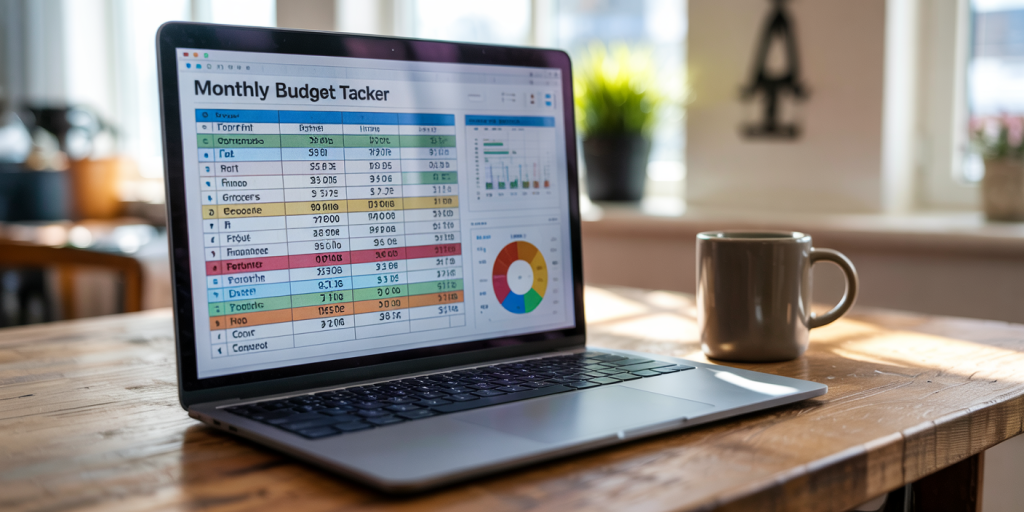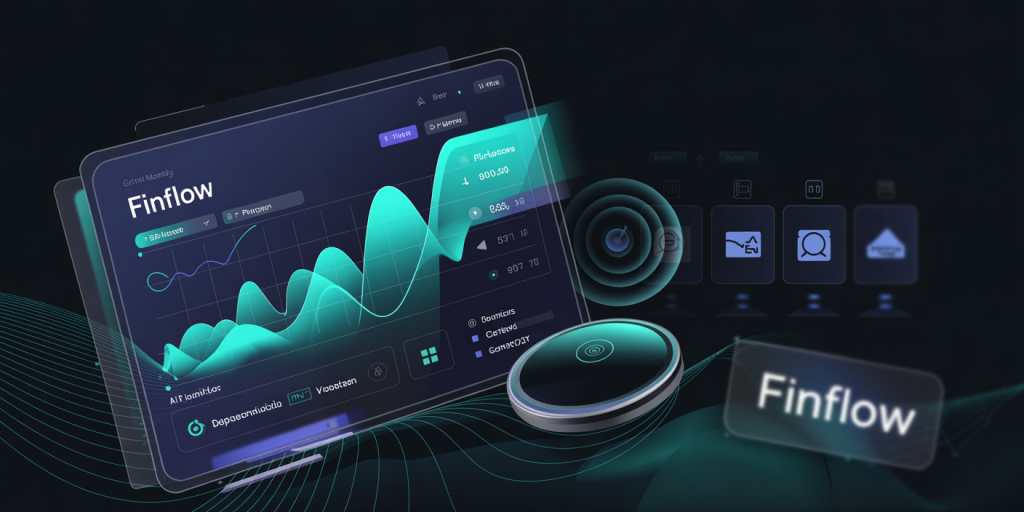Tracking Your Money: Spreadsheets vs. Financial Apps
Managing personal finances has become more accessible and varied with the advancement of digital tools. Whether you are an individual looking to budget monthly expenses or a freelancer aiming to keep track of invoices and taxes, the right financial management method can significantly impact your monetary health. Two primary approaches have surged in popularity: using spreadsheets and employing dedicated financial apps. Each has its unique advantages and potential drawbacks.

As financial literacy grows alongside technology, understanding the strengths and limitations of these tools is essential to make informed decisions for personal money management. This article explores both avenues in detail, offering a comprehensive comparison and practical insights to help you decide which fits your financial lifestyle best.
Why Tracking Your Money Matters
Effective money tracking is the foundation of sound financial planning. According to a 2023 survey by the National Endowment for Financial Education, individuals who actively track their expenses and income report 30% higher savings rates than those who don’t. This stark difference underscores the importance of choosing a reliable method to monitor and control finances.
Moreover, tracking spending patterns can reveal unnecessary expenses and opportunities for budget optimization. For example, a freelancer who closely monitors income and outgoings through precise methods can identify late-paying clients or irregular bills, thereby improving cash flow management. Whether you are saving for a major purchase, reducing debt, or investing, a solid tracking system is indispensable.
The Power of Spreadsheets for Financial Tracking
Spreadsheets have long been a staple in personal and business financial management, and their flexibility remains unrivaled. Programs like Microsoft Excel and Google Sheets provide customizable platforms where users can create tailored budgeting templates without constraints set by developers.
One practical example involves creating monthly budgets, tracking expenses, forecasting future spending, and even combining investment portfolios and debts into a single document. Spreadsheets allow integration of formulas, charts, and pivot tables, which empower users to analyze financial data deeply. For instance, a user might use conditional formatting to highlight overspending categories or apply SUMIF functions to total expenses by category.

A real case study involves a small business owner, Jane Miller, who reported that after switching to a detailed Excel worksheet tailored to her family’s and business expenses, she found a 15% reduction in unnecessary expenditures within six months. She credits the ability to customize views and analyze trends month-over-month as critical to her success.
However, spreadsheets require manual input, which can be time-consuming and prone to human error, especially if the user is unfamiliar with formulas and data validation. Yet, modern spreadsheet tools integrate with platforms such as Tiller Money, which automatically feeds bank transaction data into spreadsheets, partially automating the process.
Financial Apps: Convenience Meets Technology
Financial apps have revolutionized budgeting and money tracking by automating and simplifying the process for users. According to Statista, the financial app downloads in the United States exceeded 150 million in 2023 alone, reflecting the growing reliance on digital money management.
Apps like Mint, YNAB (You Need A Budget), and PocketGuard connect securely to bank accounts, credit cards, and investment platforms to provide real-time tracking of incomes and expenses. Users benefit from features like bill reminders, spending alerts, credit score monitoring, and investment insights without manual data entry.
For example, John, a tech professional, credits his habit of consistently saving money to the notifications and automatic categorization on Mint. The app’s ability to aggregate data from multiple accounts helped him see where he was overspending on subscriptions and utilities. Within a year, he managed to divert those savings into an emergency fund.
Financial apps offer accessibility via mobile devices, state-of-the-art security measures such as two-factor authentication, and integrations with other financial services, making them a robust solution for busy individuals. However, they can sometimes lack the granularity and flexibility of spreadsheets. Also, some apps require subscription fees for full functionalities, which may deter budget-conscious users.
Comparing Features: Spreadsheets vs. Financial Apps
The table below encapsulates a side-by-side comparison of spreadsheets and financial apps across critical dimensions relevant to money tracking.
| Feature | Spreadsheets | Financial Apps |
|---|---|---|
| Customization | Highly customizable with formulas and charts | Limited by app design, usually preset categories |
| Automation | Primarily manual; some integration possible | High automation with bank syncing and alerts |
| Cost | Generally free (except for advanced software versions) | Free versions available; premium versions cost $5–$15/month |
| Ease of Use | Requires some technical skills especially for advanced features | User-friendly, designed for all skill levels |
| Data Security | Depends on user practices and storage (locally or cloud) | Often includes advanced encryption and compliance standards |
| Accessibility | Requires device with spreadsheet software; more suited for desktops | Mobile-friendly and accessible anywhere with internet |
| Data Visualization | Can be detailed with graphs/charts generated manually | Real-time visualization with built-in dashboards |
| Integration with Other Tools | Limited; depends on plugins/scripts | Extensive – bank APIs, investment platforms, credit monitoring |
This comparison highlights that choosing between spreadsheets and financial apps depends largely on the user’s priorities—whether it is control, automation, cost, or simplicity.
Practical Cases Illustrating Both Approaches
Consider Lisa, a college student who manages her tight budget using a colorful Google Sheets template she updated weekly. Her spreadsheet includes income from part-time work, recurring expenses like rent and utilities, and discretionary spending such as entertainment. She enhances her sheet with graphs to visualize spending trends, empowering her to cut back on unnecessary items effectively.
Conversely, Michael, a busy sales executive, prefers the ease of a financial app. His preferred app syncs across his checking and credit accounts, categorizes expenses automatically, and sends warnings when he’s close to his budget limit for dining out or travel. This real-time feedback allows Michael to adjust his spending immediately rather than waiting for monthly reviews.
Both approaches serve these individuals well, but they illustrate that lifestyle, tech comfort, and specific financial goals influence tool preference.
Security Considerations and Privacy
Financial data is highly sensitive, and security is paramount when selecting a tracking method. Spreadsheets stored locally on personal devices are less vulnerable to online cyber-attacks but risk loss due to device failure or theft. Cloud storage solutions—like Google Drive or OneDrive—offer backup but introduce concerns about unauthorized access. Strong passwords and two-factor authentication help mitigate risks.
Financial apps, on the other hand, must comply with stringent industry standards such as PCI DSS (Payment Card Industry Data Security Standard) to protect user data. Leading apps employ end-to-end encryption, biometric logins, and frequent security audits to maintain trust.
Users should evaluate the reputation of financial apps, read privacy policies carefully, and prefer apps that do not sell user data to third parties. For example, a 2022 report by Javelin Strategy & Research showed that about 15% of users discontinued use of financial apps due to concerns about data privacy.
Future Perspectives: The Evolution of Money Tracking
The future of personal finance tracking is likely to blend the flexibility of spreadsheets with the automation power of financial apps. Advances in artificial intelligence (AI) and machine learning are already enabling apps to provide predictive financial insights, suggest personalized budgets, and detect fraudulent transactions with increasing accuracy.
Moreover, open banking initiatives worldwide are enhancing interoperability, allowing users to seamlessly connect various financial platforms while maintaining control over their data. This development may give rise to hybrid platforms offering spreadsheet-like customization combined with app-like convenience.
For instance, emerging tools like Tiller Money integrate bank feeds directly into customizable spreadsheets, providing the best of both worlds. Additionally, voice-assisted financial management using virtual assistants (e.g., Alexa, Google Assistant) promises hands-free tracking and advice, pushing boundaries beyond current capabilities.
As consumer preferences shift towards transparency, control, and security, the future tools may prioritize user empowerment through customizable yet automated solutions.
—
In summary, both spreadsheets and financial apps present viable options for tracking your money, each with distinct advantages. Spreadsheets excel in customization and detailed analysis but require more manual effort, whereas financial apps offer automation, real-time tracking, and user-friendly interfaces but may come at some cost and with privacy considerations. Evaluating personal habits, technical comfort, budget, and security preferences will guide users in selecting the optimal financial tracking method suited to their unique needs. The ongoing evolution of financial technology promises a future where these options merge, delivering powerful, user-centric solutions for managing money smartly and securely.

